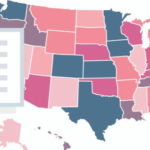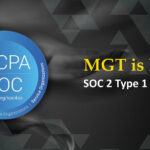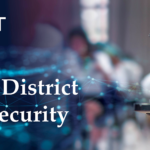According to the National Student Clearinghouse Research Center’s Spring 2023 Current Term Enrollment Estimates Report, community college enrollment grew slightly this spring and has remained stable after significant declines in the previous two years. Nonetheless, enrollment at the graduate level is experiencing a more unfavorable trend (declined by 2.2% compared to spring 2022), undermining the gains made during the pandemic. Total postsecondary enrollment remains well below pre-pandemic levels, down about 1.09 million students overall and about 1.16 million undergraduates compared to spring 2020.
Evaluating local market data
The best strategy for college and university presidents who endeavor to grow this next year is to start with a deep dive into their local market data to understand how the economy may impact their enrollment forecasts.
Rajeev Bajaj, executive vice president of MGT Education Solutions says, “In terms of our tracking, now more than ever, retaining students is critical, and it’s only going to become more critical moving forward. Because our populations are becoming so diverse, there is going to be more need in support of, for example, English language learners.”
He continues, “We need to be connecting with students and looking at leading indicators. When students are taking their first exam in college, what are the results, and is there an immediate connection in supports that may help students be successful and stay connected?”
There are many different strategies for attracting and retaining students. There is much discussion in education around the student experience and the value of student engagement. “We know that Pk-12 students need a personal connection, but in higher education, we can now do many things without having a one-on-one connection. This tells us it’s essential to understand the higher education environment in real-time.”
Data from on-campus surveys & experiences
Keeping students engaged and interested in attending college starts with data that only comes from the student experience. Karinda Barrett, EdD, vice president at MGT Education said, “We’ve had fun with some of our clients doing secret shopper surveys where our consultants go through different missions to understand what the experience is like with the campus.” This has proven to provide critical insight for our clients to better understand where bottlenecks, misrepresentations, or unconscious bias may be causing disruptions in a student’s daily life.
“It’s amazing how a lot of colleges and universities don’t understand how many barriers there are in applying to a college, or registering, or changing classes. So, helping students understand the processes and associated terminologies is important to heighten the overall experience.”
MGT recently partnered with Frederick Community College in Maryland to provide an analysis of its Learning Support Services department, now known as Student Affairs. The team provided an organizational assessment with recommendations based on internal and external reviews, including “Secret Shopper” student experiences. By taking the point of view of a new student, MGT was able to identify areas of improvement, like branding and signage to centralized office support and DEI training opportunities.
Rajeev adds, “Most importantly, the biggest impact when attracting and retaining students is belonging. Students should be able to find ‘their tribe’ so they feel comfortable where they study. These are important pieces that we want to include when working with our clients to design for student success.”
Data to identify institutional challenges and areas of opportunity
Whether it’s a higher education institution or a K-12 district, leaders must begin with a common set of facts to enable shared understanding of priorities and inform planning from Day 1. If we have the right data, we can develop more rigorous and aligned programs to attract students, professors, and staff. We’ll then understand what resources must be allocated to achieve success. That’s why MGT often recommends an organizational effectiveness review as a great tool to begin real progress. Rajeev says, “These reviews result in a clear set of facts that disparate groups can engage and agree as true. People are entitled to their own opinions, but they’re not entitled to their own set of facts.”
In functioning as an engine of support, analysis, and rigor, we can deliver on our promise to improve student outcomes and impact communities.
Data to support partnerships
“Market and industry data often leads to identifying partnerships with not only local K-12 districts but also with industry leaders and employers. It’s more critical than ever for internships and apprenticeships to make the right partnership connections to help students understand what the workforce is like and where easy entry points exist,” says Karinda.
When working with industry partners, many hard decisions must be made based on data reported on local economic trends. “Making decisions to end programs or design new ones can be difficult but necessary to provide the right type of graduates and set both students and industry up for success.”
Regardless of your end goal, engaging a trusted partner to research, analyze, and gather data about your organization and the industry and market trends is imperative when designing future-state plans. Beginning with the facts, and just the facts, provides an undisputable foundation for disparate stakeholders to align and then focus their efforts on a shared vision!










